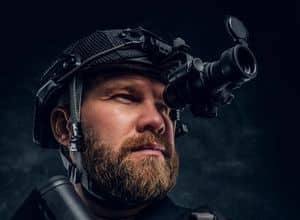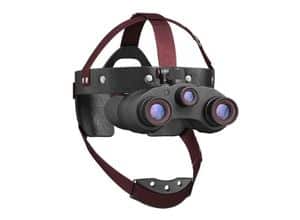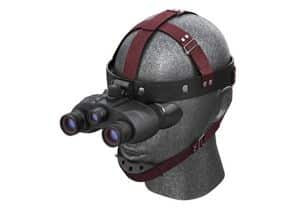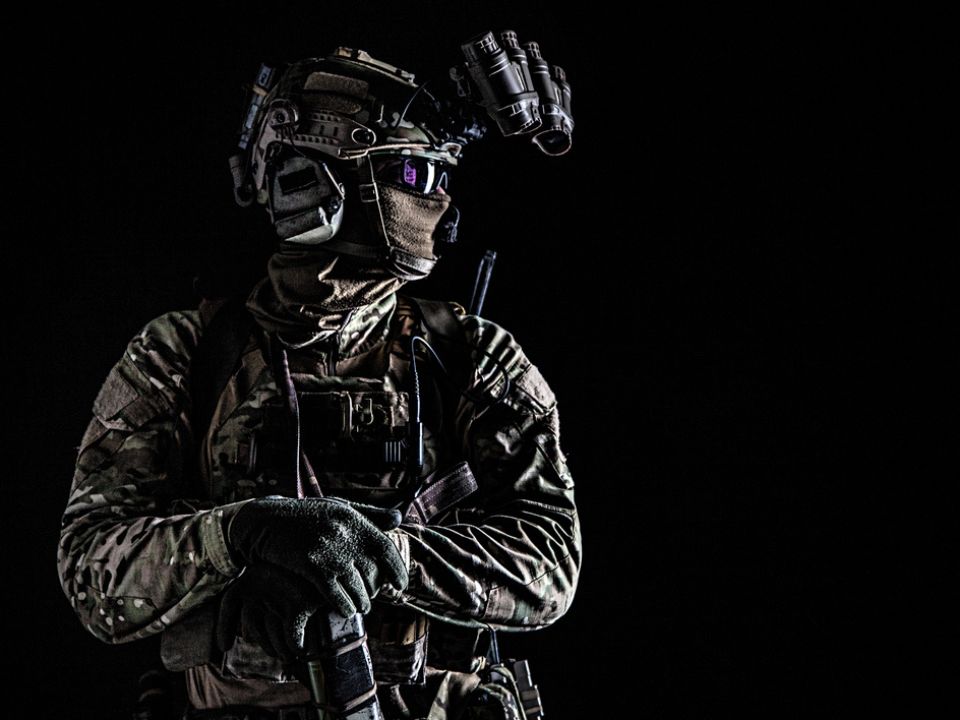If you’re planning to purchase military aviation night vision goggles, knowing how to choose the right NVGs for you will help you avoid wasting money. These items are not inexpensive; in fact, some of them cost hundreds of dollars or more. Making an ill-advised purchase might result in you regretting it and incurring a significant financial loss.
This optical gadget amplifies weak light using an electrical converter (magnifier tube). Hence, military aviation night vision goggles do not enable you to see in complete darkness, just as any other equipment based on image intensifier tubes (night monoculars, binoculars, passive night sights, etc.). Yet, if there is even a little light in the environment, the image intensifier tube will magnify it several times, allowing the wearer of night vision goggles to see clearly what is happening around them.
It would be best to consider the industry in which you want to use night vision goggles in. While the list is extensive, here are the top industries that need NVGs:

- Nighttime video shooting and photography;
- For special and military operations;
- Patrols;
- Sea and air navigation;
- Animal watching and hunting
Each branch has a unique specification. Nonetheless, remember that NVGs have technical characteristics that you should consider before purchasing.
Factors to Consider When Purchasing Military Aviation Night Vision Goggles
It would be best if you thought about a variety of night vision goggle usage and other factors before making a purchase. Before making a purchase, take a closer look at some of the top considerations:
Usage
While military aviation night vision goggles may come in various shapes and sizes, use is crucial. Choosing which NVGs to buy would depend largely on how you intend to use them. The military’s usage of night vision goggles is very different from other uses, such as bird watching.
Generations
Night Vision Generations determine price, clarity, brightness, and lifespan. They are often identified as GEN 1-4.
The Vietnam War saw Generation 1 night vision employment, which has been available since the 1960s. While at the time, it was undoubtedly an improvement over nothing. As the generations advanced, so did clarity and cost.
Each generation has varying quality levels, which is another item of little value. The finest tubes that come off the manufacturing line are given first dibs to the US military. Because of this, you may sometimes notice quality variations between two tubes of the same generation or even model.
As night vision technology advanced, new generations of NVGs were created to enhance usefulness and performance.
Generation 1: The first generation of night vision systems utilized an image intensifier tube to magnify available light and provide a clear picture in dim lighting. These gadgets were rather heavy, low-resolution, and often exhibited visual distortion.
Generation 2: The image intensifier tube technology used in generation 1 night vision devices was improved in generation 2 devices, leading to enhanced picture quality and resolution. The generation 2 devices were more adaptable and useful in a wider variety of lighting settings because of enhanced resilience to exposure to intense light.
Generation 3: Multi-alkali photocathodes, which enhanced the performance of the image intensifier tube and gave greater resolution and picture quality, were first used in the third generation of night vision systems. Devices from the third generation also featured longer battery lives, making them more useful for continuous usage.
Generation 4: To enable users to see in full darkness, the fourth generation of night vision equipment coupled image intensification technology with thermal imaging. These small, lightweight gadgets provided better situational awareness and target acquisition in low light.
The capabilities and performance of night vision technology have increased with each new generation by building on the prior one. The most recent advancements in night vision technology continue to increase situational awareness and target acquisition capabilities for troops, law enforcement, and other users in low light.
Field of View
Resolution and field of view directly impact how much you can see through your goggles. Magnification shouldn’t be considered while using night vision goggles since it might affect your eyesight and depth perception.
Size, Weight, and Comfort

Weight, size, and comfort are crucial since military aviation night vision goggles are devices you will ultimately have to wear. Due to their small size and low weight, night vision goggles are simple to use. You will have to wear the gadget constantly on your head. Users may feel uneasy due to the device’s heavyweight. Hence, pay close attention to how much your military aviation night vision goggles weigh. Also, confirm that the moveable monocular attachment on the helmet or skull crusher suits the size of each head or helmet.
Weather Resistance
Wearers who want to use their gadgets in more extreme weather situations may need waterproof goggles and should consider weather-resistance goggles.
Battery Life
Military aviation night vision goggles need a separate source of electrical power, provided by chemical batteries, most often lithium-ion batteries. The less often you need to replace the batteries, the less probable it is that your goggles may suddenly stop working because of a malfunctioning power supply, and the longer the battery life.
Price
Match the device’s price to the advantages it will provide. Consider the tasks you want to do with your night vision equipment. Choose models that are reasonable for serious work.
Resolution
This setting describes the device’s ability to show two adjacent points or lines independently. Generally, the resolution is specified in millimeters per dash (ppm). The resolution increases as the dashes per millimeter (lines) increase and the angular value decreases. The clarity of the picture that the observer can see increases with the device’s resolution.
Field Of View and Magnification
Military aviation night vision goggles cannot enlarge images as binoculars can. This isn’t necessarily a drawback, however. The broadest field of vision is provided by a 1x magnification, which is often far more crucial.
Spectrum

The apparatus multiplies the object’s brightness by thousands. This may be either visible spectrum light from the sun or Infrared lighting. The visible portion of the spectrum may greatly grow and stretch from 400 to 750 nm. The UV range spans from 100 to 400 nm, while the near ultraviolet range theoretically spans the lower limit from 300 to 400 nm.
The ideal thermal night vision goggle will help you achieve your goals, while the wrong option wastes time and money.
Options For Night Vision Mounting
Having military aviation night vision goggles attached to your head is the most typical way to use them. This enables hands-free operation. Most NVG helmets include a shroud that holds your preferred NVG mount and connects to the military aviation night vision goggles.
The “skull” or “face” mounts, which function similarly to a helmet-style retention system but only include the shroud and not the actual helmet shell, are another alternative for head-mounted equipment. Because a bump helmet offers so much more comfort and safety for just a few additional ounces, people usually choose it over other alternatives.
Monoculars and night vision goggles may be easily fixed on tripods or used as portable devices. Since you don’t need to move about or use your hands, these arrangements are perfect.

